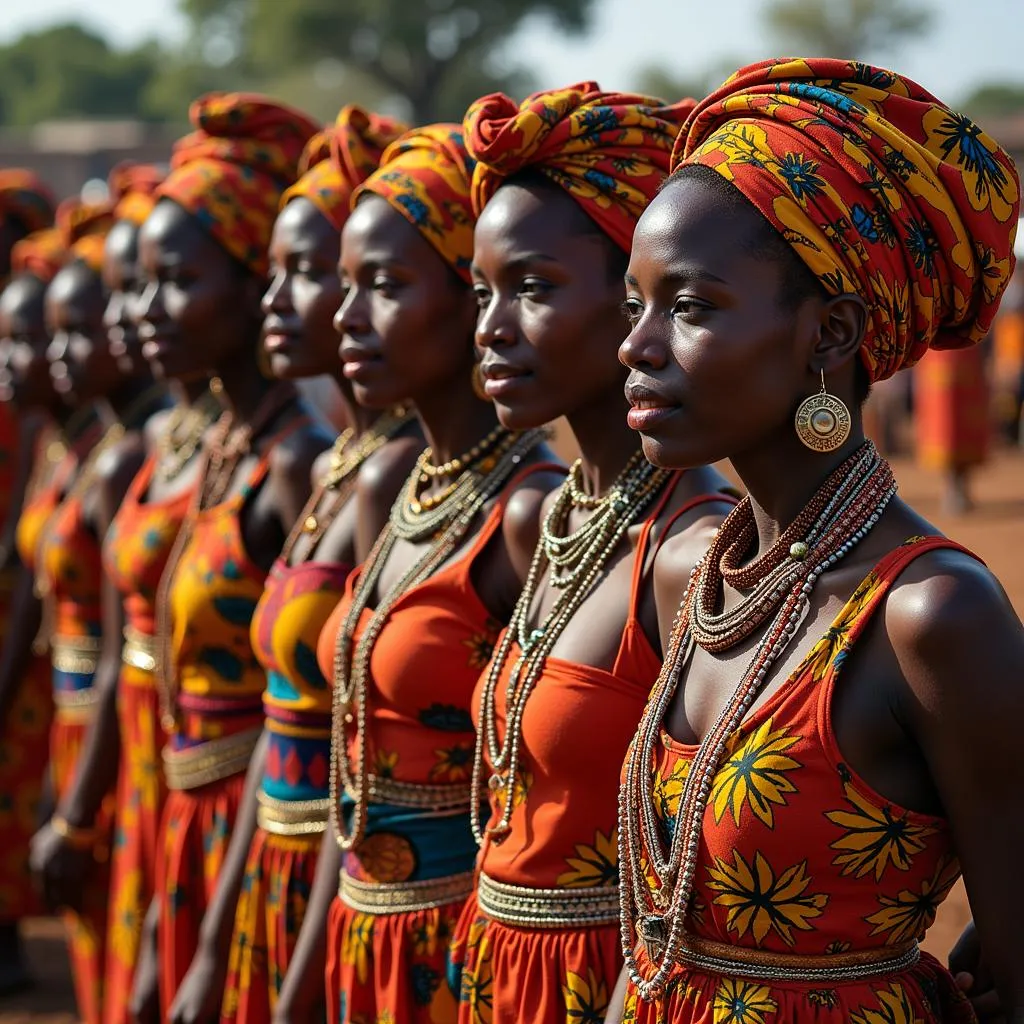Majestic African Elephant: A Kenyan Icon
The African elephant in Kenya, a symbol of the country’s wild beauty, stands as a testament to the importance of conservation. These magnificent creatures play a crucial role in the Kenyan ecosystem and draw visitors from around the globe. Let’s delve deeper into the fascinating world of these gentle giants.
Understanding the African Elephant in Kenya
Kenya is home to one of the largest populations of African elephants, estimated to be around 36,000. These elephants are vital to the Kenyan landscape, contributing to seed dispersal and shaping the habitat. Sadly, they face numerous threats, primarily from poaching and habitat loss. Various conservation efforts are underway, highlighting the importance of protecting these majestic animals for generations to come. For those interested in exploring other aspects of African culture, check out affordable African safari 2020 options.
The Importance of Conservation Efforts
The survival of the African elephant in Kenya depends heavily on ongoing conservation initiatives. Organizations and local communities are working together to combat poaching, protect elephant habitats, and promote sustainable tourism. These efforts include anti-poaching patrols, community education programs, and the establishment of protected areas.
The dedicated work of these conservationists is making a real difference, but the fight to protect these iconic animals is far from over. Their success relies on continued support and global awareness.
Where to See African Elephants in Kenya
Kenya offers an array of national parks and reserves where visitors can witness these magnificent creatures in their natural habitat. Amboseli National Park, Tsavo National Park, and Maasai Mara National Reserve are among the most popular destinations. These parks provide stunning backdrops for observing elephants as they roam freely, interacting with their families and the environment.
Planning Your Elephant Safari
Planning a safari to see the African elephant in Kenya can be an exciting adventure. Choosing the right time of year, booking accommodations, and selecting a reputable tour operator are key steps to ensure a memorable experience. For some cinematic inspiration, consider watching an African safari movie before you go.
For those interested in African design and aesthetics, you can explore the works of African interior designers.
Threats to Kenyan Elephants
Poaching remains a significant threat to African elephants in Kenya. The demand for ivory continues to fuel this illegal activity, putting elephant populations at risk. Habitat loss due to expanding human settlements and agricultural activities also poses a serious challenge. These factors combined create a precarious situation for the long-term survival of these magnificent animals.
Combating Poaching and Habitat Loss
Efforts to combat poaching and habitat loss are crucial for the future of the African elephant in Kenya. Increased anti-poaching patrols, stricter law enforcement, and community involvement are essential components of these initiatives. Furthermore, raising awareness about the importance of elephant conservation and promoting responsible tourism can help to protect these animals and their habitat. Looking for unique African beverages? Check out an African beer with an elephant on the label.
Want to enhance your digital workspace? Explore some striking African elephant HD wallpapers.
The Future of African Elephants in Kenya
The future of the African elephant in Kenya rests on the continued commitment to conservation and the collaborative efforts of individuals, organizations, and governments. By working together, we can ensure that these magnificent creatures continue to roam the Kenyan landscape for generations to come.
Conclusion
The African elephant in Kenya is a national treasure, a symbol of the country’s rich biodiversity, and a crucial part of its ecosystem. By supporting conservation efforts and promoting responsible tourism, we can all contribute to the long-term survival of these iconic animals.
FAQ
- What is the current population of African elephants in Kenya? Approximately 36,000.
- What are the main threats to Kenyan elephants? Poaching and habitat loss.
- Where can I see African elephants in Kenya? Amboseli, Tsavo, and Maasai Mara are popular destinations.
- How can I contribute to elephant conservation? Support reputable organizations and practice responsible tourism.
- What is being done to combat poaching? Increased patrols, stricter laws, and community involvement.
- Why are elephants important to the Kenyan ecosystem? They play a crucial role in seed dispersal and shaping the habitat.
- What should I consider when planning an elephant safari? Time of year, accommodation, and a reputable tour operator.
Common Scenarios and Questions:
- Scenario: You’re planning a trip to Kenya and want to see elephants. Question: What’s the best time of year to visit for optimal elephant viewing?
- Scenario: You’re concerned about ethical tourism. Question: How can I ensure my safari contributes to conservation efforts rather than harming elephants?
- Scenario: You want to learn more about elephant behavior. Question: Are there opportunities to observe elephants in a respectful and non-invasive manner?
Further Exploration:
Explore more about African wildlife and conservation on our website. Learn about other fascinating animals that share the Kenyan landscape with the elephant.
Contact Us
When you need support, please contact us: Phone: +255768904061, Email: kaka.mag@gmail.com Or visit us at: Mbarali DC Mawindi, Kangaga, Tanzania. We have a 24/7 customer service team.




